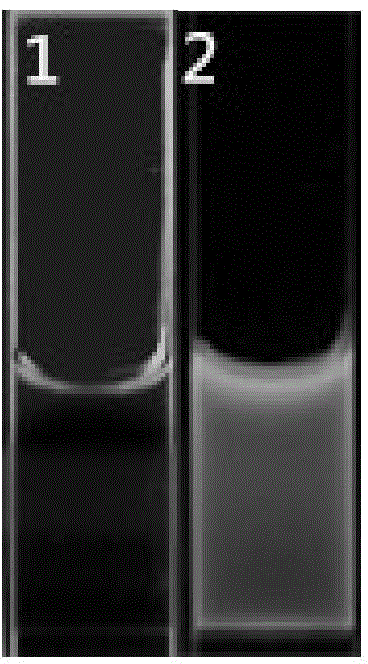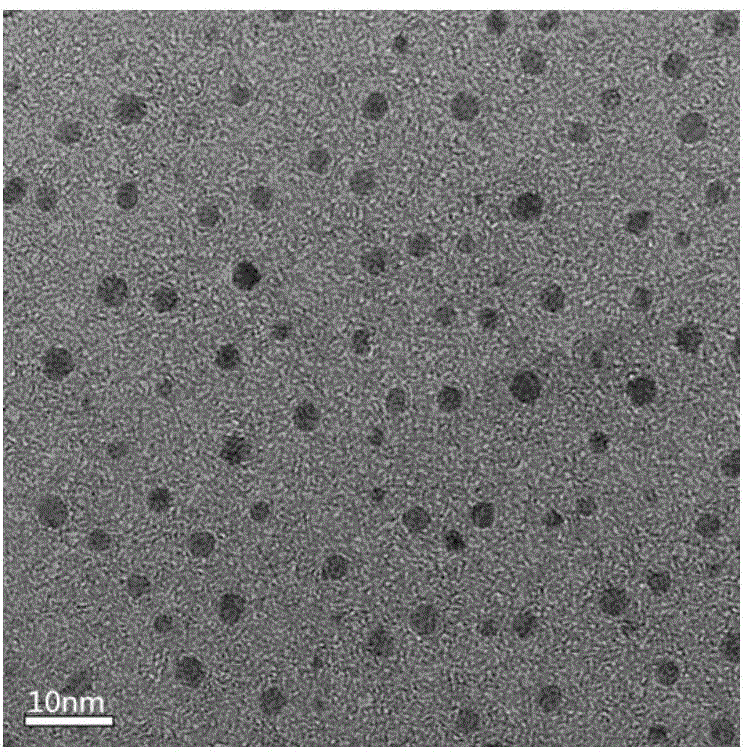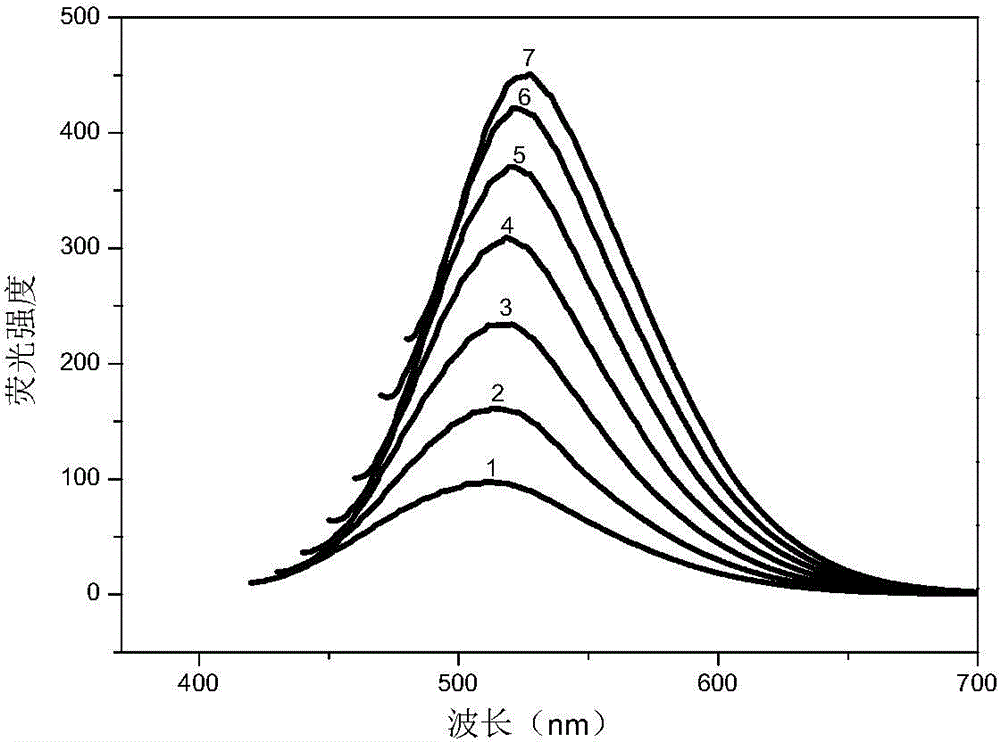Preparation method of green fluorescent carbon spot and application of green fluorescent carbon spot in cell imaging
A technology of green fluorescence and carbon dots, applied in the field of preparation of fluorescent nanomaterials, can solve the problems of complex preparation methods, harsh experimental conditions, environmental hazards, etc., and achieve the effects of simple preparation methods, low cost, and interference avoidance.
- Summary
- Abstract
- Description
- Claims
- Application Information
AI Technical Summary
Problems solved by technology
Method used
Image
Examples
Embodiment 1
[0039] Preparation of green fluorescent carbon dots using lily petals as carbon source:
[0040] (1) Add 0.5g of lily petal powder to 20mL of deionized water to prepare a mixed solution;
[0041] (2) Transfer the mixed solution obtained in (1) to a hydrothermal reaction kettle, and conduct a hydrothermal reaction at 200° C. for 3 hours;
[0042] (3) The product obtained in (2) was centrifuged at 4000r / min for 10min in a centrifuge, and then dialyzed for 48h with a dialysis bag with a molecular weight cut-off of 500-1000Da to finally obtain a green fluorescent carbon dot solution.
[0043] The photos of the prepared green fluorescent carbon dot solution under the irradiation of fluorescent lamp and ultraviolet lamp with a wavelength of 365nm are shown in figure 1 , wherein 1 is a picture of the green fluorescent carbon dot solution under the irradiation of a fluorescent lamp, and the color is brown, and 2 is a picture of a wavelength of 365nm ultraviolet light, and the color i...
Embodiment 2
[0047] Preparation of green fluorescent carbon dots using rose petals as carbon source:
[0048] (1) 0.5g rose petal powder was added into 20mL deionized water to obtain a mixed solution;
[0049] (2) The mixed solution obtained in (1) was transferred to a hydrothermal reaction kettle, and hydrothermally reacted at 250° C. for 2 h;
[0050] (3) Centrifuge the product obtained in (2) at 4000 r / min for 10 minutes, and then dialyze the product with a dialysis bag with a molecular weight cut-off of 500-1000 Da for 48 hours to finally obtain a green fluorescent carbon dot solution.
[0051] The fluorescence emission spectra of the prepared green fluorescent carbon dots at different excitation wavelengths are shown in Figure 4 , where 1 to 7 are the fluorescence spectra at excitation wavelengths of 400 nm, 410 nm, 420 nm, 430 nm, 440 nm, 450 nm and 460 nm, respectively.
Embodiment 3
[0053] Preparation of green fluorescent carbon dots using Sophora japonica petals as carbon source:
[0054] (1) 0.5g of Sophora japonica petal powder was added to 30mL of deionized water to prepare a mixed solution;
[0055] (2) The mixed solution obtained in (1) was transferred to a hydrothermal reaction kettle, and hydrothermally reacted at 200° C. for 3 h;
[0056] (3) Centrifuge the product obtained in (2) at 4000 r / min for 10 minutes, and then dialyze the product with a dialysis bag with a molecular weight cut-off of 500-1000 Da for 48 hours to finally obtain a green fluorescent carbon dot solution.
[0057] The fluorescence emission spectra of the prepared green fluorescent carbon dots at different excitation wavelengths are shown in Figure 5 , where 1 to 7 are the fluorescence spectra at excitation wavelengths of 400 nm, 410 nm, 420 nm, 430 nm, 440 nm, 450 nm and 460 nm, respectively.
PUM
| Property | Measurement | Unit |
|---|---|---|
| size | aaaaa | aaaaa |
Abstract
Description
Claims
Application Information
 Login to View More
Login to View More - R&D
- Intellectual Property
- Life Sciences
- Materials
- Tech Scout
- Unparalleled Data Quality
- Higher Quality Content
- 60% Fewer Hallucinations
Browse by: Latest US Patents, China's latest patents, Technical Efficacy Thesaurus, Application Domain, Technology Topic, Popular Technical Reports.
© 2025 PatSnap. All rights reserved.Legal|Privacy policy|Modern Slavery Act Transparency Statement|Sitemap|About US| Contact US: help@patsnap.com



